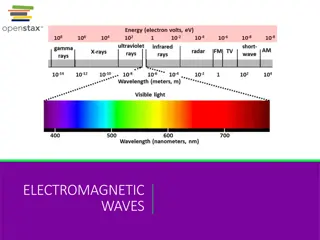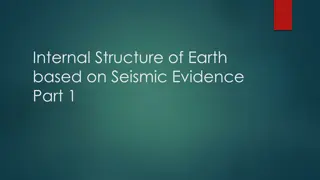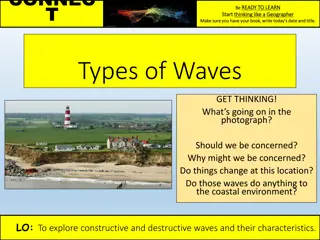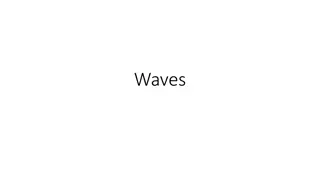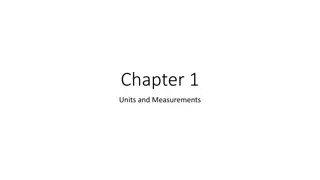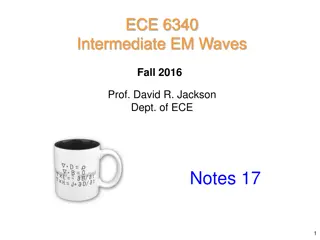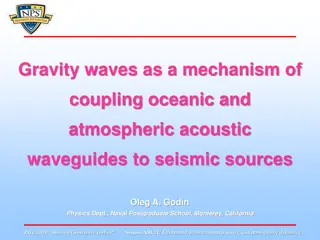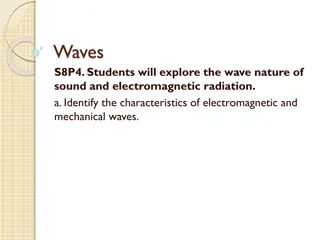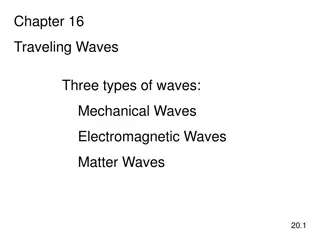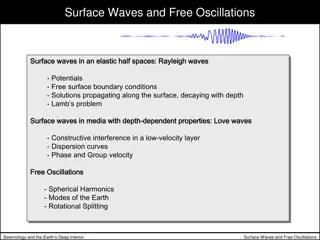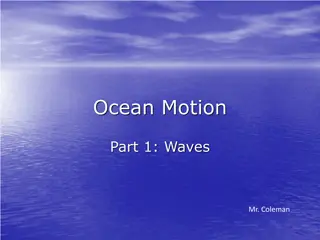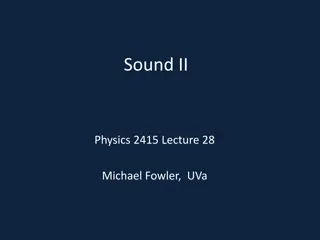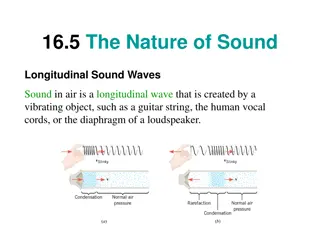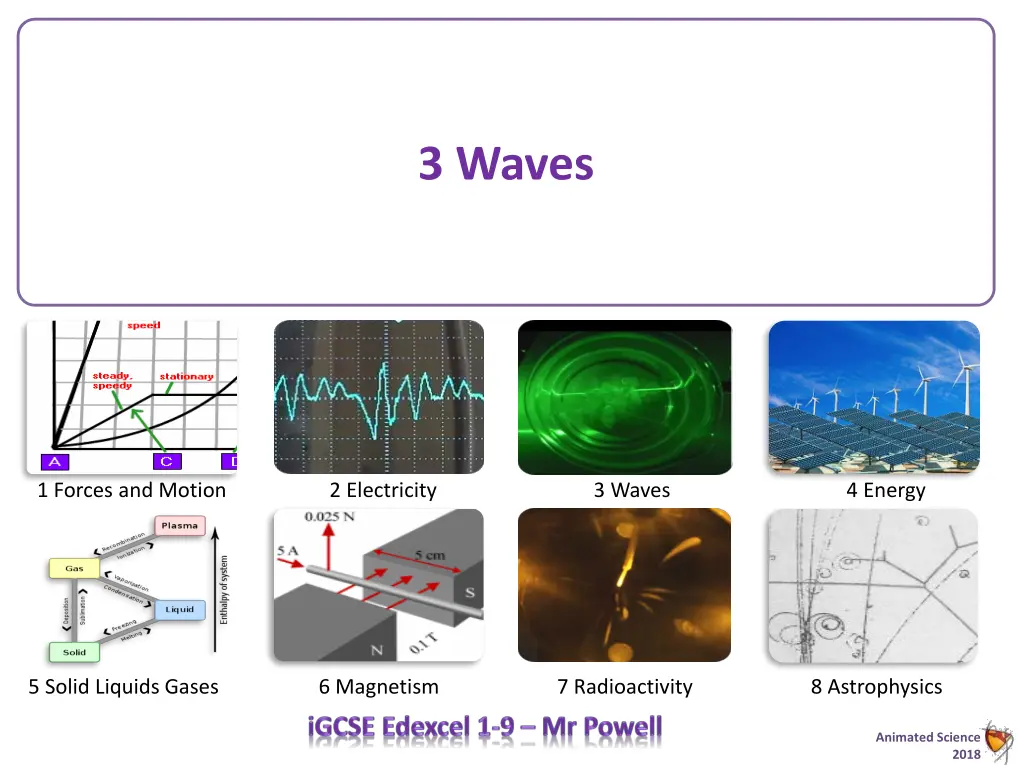
Understanding SI Units and Derived Units in Waves Science
Learn about the fundamental SI units of measurement used in waves science, as well as derived units such as frequency, force, energy, and more. Explore the importance of using standardized units in scientific measurements and how they contribute to our understanding of physical quantities.
Download Presentation

Please find below an Image/Link to download the presentation.
The content on the website is provided AS IS for your information and personal use only. It may not be sold, licensed, or shared on other websites without obtaining consent from the author. If you encounter any issues during the download, it is possible that the publisher has removed the file from their server.
You are allowed to download the files provided on this website for personal or commercial use, subject to the condition that they are used lawfully. All files are the property of their respective owners.
The content on the website is provided AS IS for your information and personal use only. It may not be sold, licensed, or shared on other websites without obtaining consent from the author.
E N D
Presentation Transcript
3 Waves 1 Forces and Motion 2 Electricity 3 Waves 4 Energy 5 Solid Liquids Gases 6 Magnetism 7 Radioactivity 8 Astrophysics Animated Science 2018
3 Waves - Units 3.1 use the following units: degree (o), hertz (Hz), metre (m), metre/second (m/s), second (s). Animated Science 2018
SI Units System A physical quantity is something that can be measured. For any measurement, the unit being used must be stated to give an understanding of the scale of the measurement. For example, distance can be measured in kilometres or in miles. They are similar, but not the same and it is important to identify which was used for the measurement, to know how far the distance actually is. Syst me Internationale d'Unit s The units that scientists use all over the world are standardised in the Syst me Internationale d'Unit s - SI units. It is important to remember these six fundamental (or 'base') units of measurement: metre (m) - unit of length kilograms (kg) - unit of mass second (s) - unit of time ampere (A) - unit of electrical current kelvin (K) - unit of temperature mole (mol) - unit of the amount of substance Animated Science 2018
Derived SI Units System There are many quantities scientists measure that come from the base units. These derived units are very useful to quote as measurements, but they are not fundamental as they come from fundamental units. Name Frequency Force Energy Power Pressure Electric charge Electric potential difference Electric resistance Magnetic flux density Unit hertz newton joule watt pascal coulomb Abbreviation Hz N J W Pa C For example, frequency is the number of times something happens per unit of time. This is a useful quantity, but it is a division into the time unit. volt V ohm The standard unit for frequency is considering the number 'per second', which is called 'hertz, Hz', but this comes from the fundamental unit 'second'. tesla T Animated Science 2018
3 Waves Derived SI Units System 2) Add the missing parts to the table . 1) Fill in the missing gaps .. Name Unit Abbreviation Electric resistance metre (m) - unit of . Watt kilograms (kg) - unit of .. joule second (s) - unit of time newton (A) - unit of electrical Electric charge C current Electric potential difference . (K) - unit of temperature (mol) - unit of the amount tesla of Pressure Pa 3) Use the information given and any other sources (online) to write out your own; Definitions Explanations Examples Formula with number examples For the list below as we will use in the Waves unit. Animated Science 2018
3 Waves Derived SI Units System 2) Add the missing parts to the table . 1) Fill in the missing gaps .. Name Unit Abbreviation Electric resistance metre (m) - unit of . Watt kilograms (kg) - unit of .. joule second (s) - unit of time newton (A) - unit of electrical Electric charge C current Electric potential difference . (K) - unit of temperature (mol) - unit of the amount tesla of Pressure Pa 3) Use the information given and any other sources (online) to write out your own; Definitions Explanations Examples Formula with number examples For the list below as we will use in the Waves unit. Animated Science 2018
3 Waves Units Information Metre (m):the fundamental unit of length in the metric system, equal to 100 centimetres or approximately 39.37 inches. Kilogram (kg): the SI unit of mass, equivalent to the international standard kept at S vres near Paris (approximately 2.205 lb). Second (s): the SI base unit of time which is used to determine progression of the universe. Defined from a complex atomic transition or as a division of an Earth day. Degree ( ): this is a way to measure an angle. With 360 in a circle (same as 2 radians) we can use this to measure angles from the normal from a surface to explain wave behaviours Frequency: This is a useful quantity, but it is a division into the time unit. The standard unit for frequency is considering the number 'per second', which is called 'hertz, Hz', but this comes from the fundamental unit 'second'. Speed: the rate at which someone or something moves or operates or is able to move or operate in m/s or ms-1 Period: T or time for 1 whole cycle of a wave measured in s or hours etc.. Animated Science 2018
3 Waves Units Information Task: Work with a partner and discuss your work today. Take a few of these terms and take it in turns to explain to another what they mean in your own words. Name Frequency Force Energy Power Pressure Electric charge Electric potential difference Electric resistance Magnetic flux density Unit hertz newton joule watt pascal coulomb Abbreviation Hz N J W Pa C Degree ( ) Kilogram (kg) Metre (m) Second (s) Frequency Hz Speed m/s Period, T SI Base Units metre (m) - unit of length kilograms (kg) - unit of mass second (s) - unit of time ampere (A) - unit of electrical current kelvin (K) - unit of temperature mole (mol) - unit of the amount of substance volt V ohm tesla T Animated Science 2018


